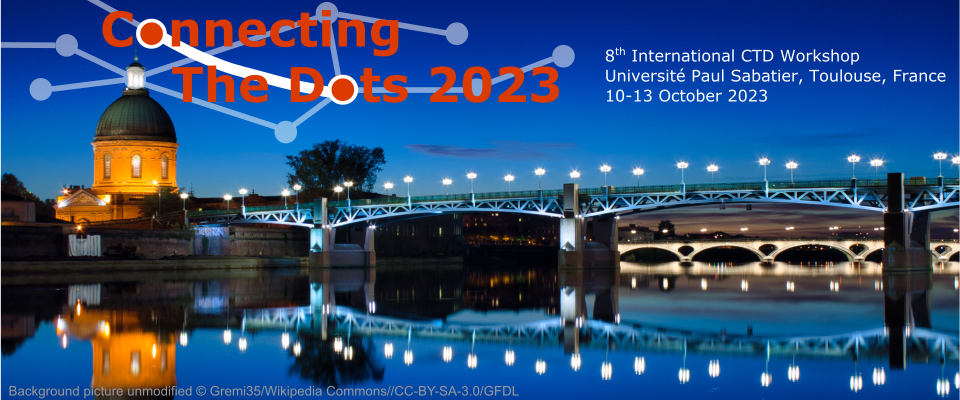Speakers
Description
In particle physics experiments, hybrid pixel detectors are an integral part of the tracking systems closest to the interaction points. Utilising excellent spatial resolution and high radiation resilience, they are used for particle tracking via the “connecting the dots” method seen in layers of an onion-like structure. In the context of the Medipix Collaborations, a novel, complimentary approach to particle detection has been proposed. This approach relies on analysis of tracks seen in a pixel matrix. Characteristic track features are exploited for the identification of impinging particles, precise particle trajectory, or reaction kinematics reconstruction.
The presented work will concentrates on hybrid silicon detectors of the Timepix3 type [1], which consist of a radiation-sensitive layer typically made of silicon with dimensions 1.408 × 1.408 × 0.05 cm. The active material is then bump bonded to a readout chip at 256 × 256 points with a pitch of 55 μm. Using these detectors, novel algorithms for particle fluence, particle identification, and particle trajectory reconstruction (tracking) are developed mainly for single-layer detectors. These new algorithms were trained and extensively tested with simulation data, then verified with real-world data sets of known particle composition, outperforming state-of-the-art [2,3] in terms of accuracy and stability. In particular, a significant improvement in the tracking resolution was achieved. The capability of proton spectrum determination in compact single-layer detectors was subsequently demonstrated at a hadron therapy facility and using data acquired by the Space Application Timepix Radiation Monitor (SATRAM) in the inner Van-Allen radiation belt.
As a high energy physics application, the methods were applied to data taken at the MoEDAL-MAPP (Monopoles and Exotics Detector At LHCb) [4,5] experiment at the Large Hadron Collider located in CERN, where Timepix3 is at a distance of 1 m from the interaction point. The improved particle tracking algorithms and an unobstructed view allow for the determination of the particle trajectories arising at the point of collisions of opposing beams at the Large Hadron Collider. The improved resolution permits a quantification of structural properties of the field, showing clear variation during lead-lead and proton-proton collision periods (Figure 1). Similarly, the point of interaction and background sources were isolated separately, allowing for the individual classification of the spectral properties of both field contributions.
[1] Poikela, T., et al. "Timepix3: a 65K channel hybrid pixel readout chip with simultaneous ToA/ToT and sparse readout." Journal of instrumentation 9.05 (2014): C05013.
[2] Bergmann, B., et al. "Particle tracking and radiation field characterization with Timepix3 in ATLAS." Nuclear Instruments and Methods in Physics Research Section A: Accelerators, Spectrometers, Detectors and Associated Equipment 978 (2020): 164401.
[3] P. Mánek et al. “Improved algorithms for determination of particle directions with Timepix3”. In: Journal of Instrumentation 17.01 (Jan. 2022), p. C01062. URL: https://dx.doi.org/10.1088/1748-0221/17/01/C01062
[4] M. Fairbairn and J. L. Pinfold, “MoEDAL – a new light on the high-energy frontier”, Contemporary Physics, 58:1, pp. 1-24 (2017). doi: 10.1080/00107514.2016.1222649
[5] J. Pinfold (MoEDAL collaboration), “MoEDAL-MAPP – an LHC Dedicated Detector Search Facility” URL: https://arxiv.org/abs/2209.03988
